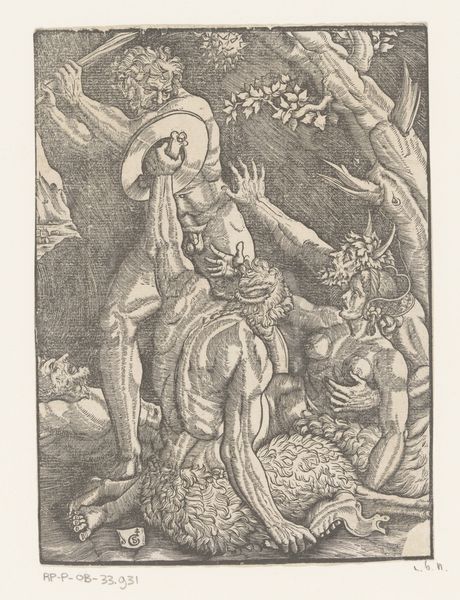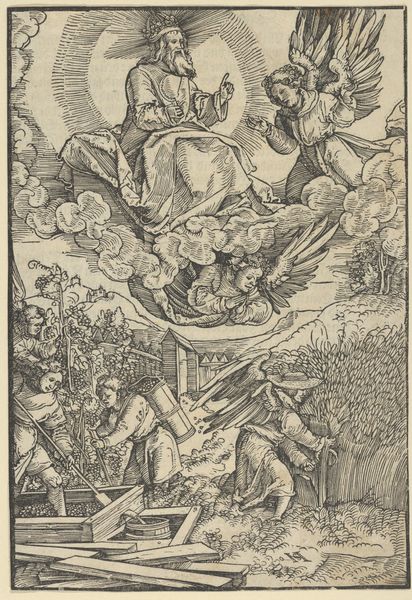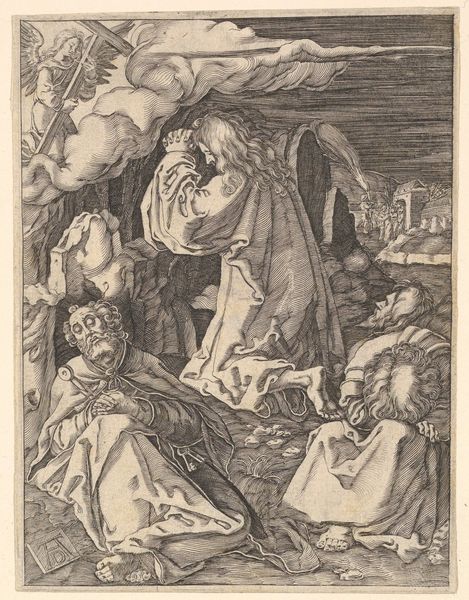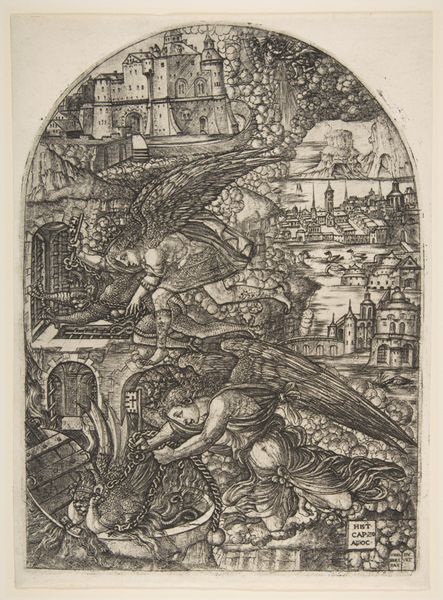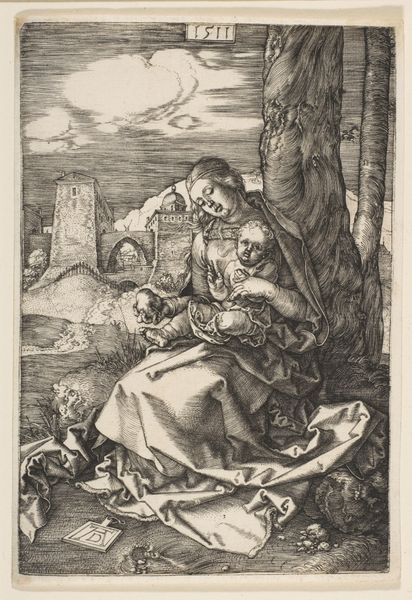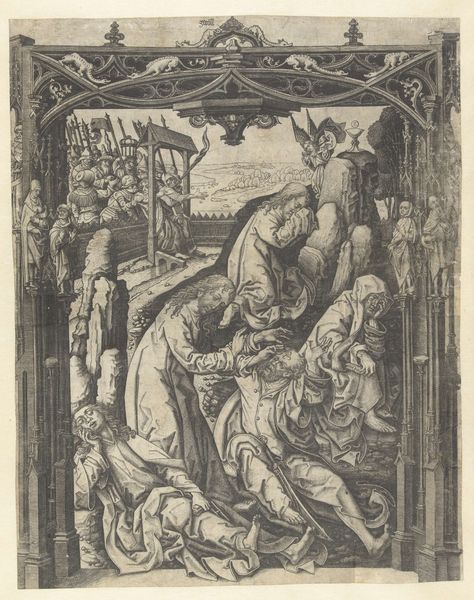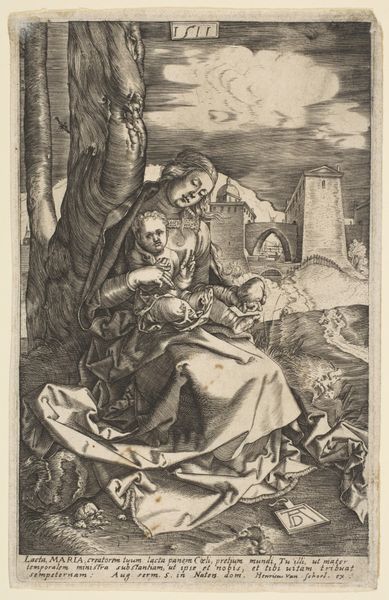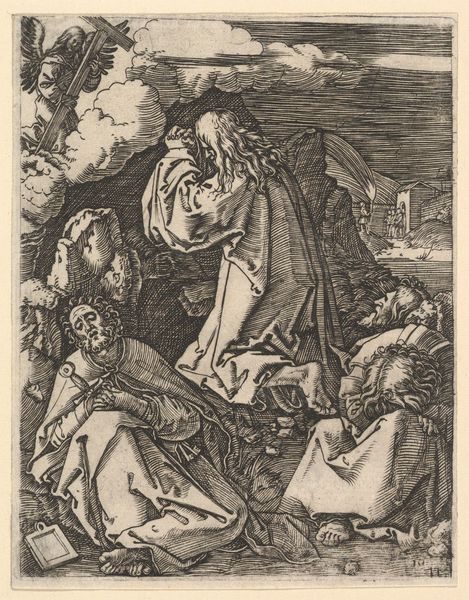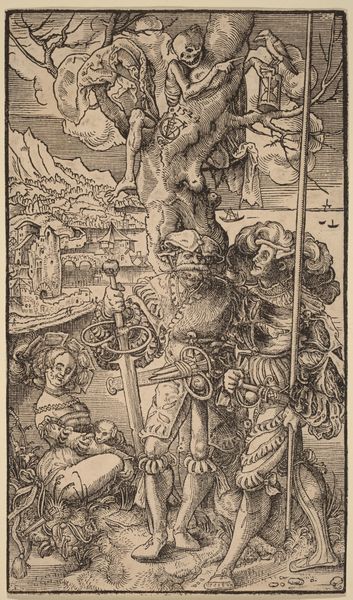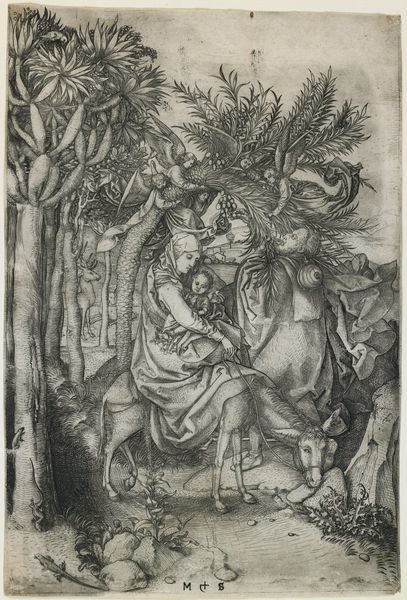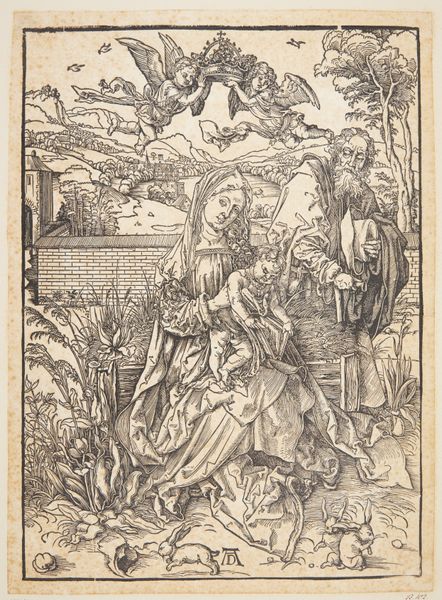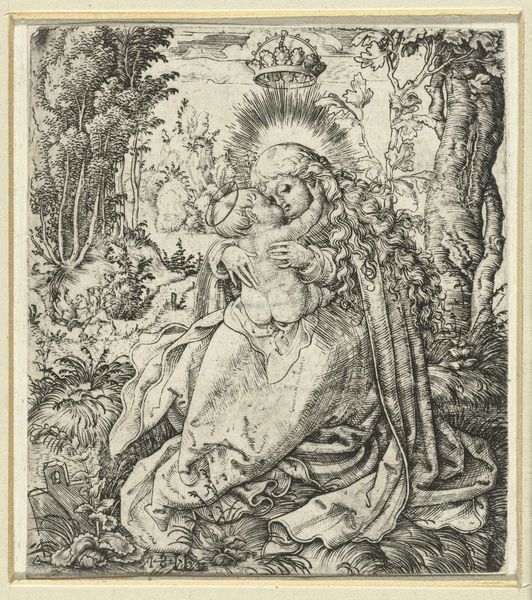
Hercules, Two Satyrs, and a Woman, plate two from The Labors of Hercules c. 1528
0:00
0:00
drawing, print, paper, engraving
#
drawing
# print
#
figuration
#
paper
#
11_renaissance
#
history-painting
#
engraving
Dimensions: 198 × 147 mm (image/plate); 253 × 173 mm (sheet)
Copyright: Public Domain
Curator: This engraving, created around 1528, depicts Hercules with two Satyrs and a woman. It’s plate two from the series, "The Labors of Hercules," and we have it here courtesy of The Art Institute of Chicago. Editor: Immediately, it's the contrast that grabs me. The light, almost ethereal figures against this dense, brooding background…it feels very dramatic, a moment of intense action frozen in time. Curator: The figure of Hercules is, as usual, central. Note the visual emphasis on his physical power – the musculature, the tension as he prepares to strike. Hercules represents not just strength but also a certain moral order asserting itself over chaos. Editor: Absolutely! And the satyrs, clinging to him, they’re like primal instincts – fear and desire all rolled into one. That chaotic energy you mentioned, it’s palpable in their poses. It’s really fascinating how he contrasts the rational and irrational parts of humanity within a single composition. Curator: Indeed. Satyrs often symbolize the unrestrained, animalistic side of human nature. And the woman's presence, caught in the middle... It raises questions about her role, doesn't it? Is she a victim, a temptress, or a witness? The Renaissance loved these complicated, multi-layered scenes. Editor: A witness, maybe. I keep coming back to the theatrical lighting and all those grasping arms… It has the feel of a morality play. Hercules embodying reason triumphs against the lower impulses that these satyrs embody. That poor, terrified fellow at the bottom seems to agree. Curator: Considering its place in “The Labors of Hercules” series, the plate serves a vital cultural role beyond just art. Each episode, each heroic exertion against impossible odds, serves as a cultural touchstone—helping the Renaissance re-imagine itself through classical ideals. Editor: It really does pull you into the frame. What feels particularly moving is thinking that, across all that time and changes, the same conflicts and human battles are still very alive within us. It’s sobering and somehow deeply encouraging. Curator: It certainly provides food for thought, even centuries later, and asks a viewer, 'what is Hercules in you?'. Editor: What a stunning snapshot of humanity wrestling with itself. Makes you wonder what myths future generations will create to try and define us!
Comments
No comments
Be the first to comment and join the conversation on the ultimate creative platform.
